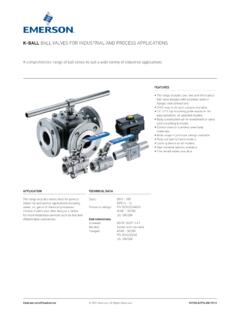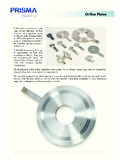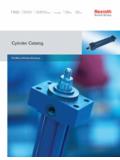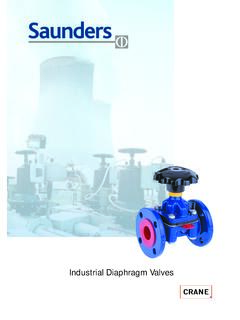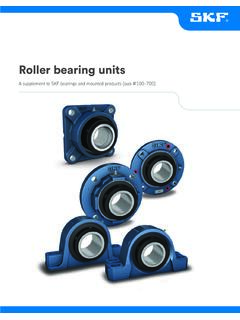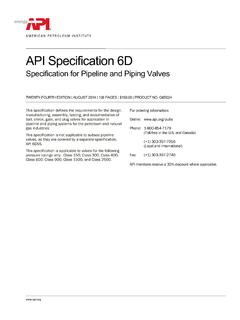Transcription of Bolus Feeding in Adults: A Practical Guide - Nutricia
1 Bolus Feeding in adults : A Practical GuideNovember 2017 (to be reviewed November 2020)National Nurses Nutrition GroupRegistered Charity No: 295411 Bolus Feeding in Adults: A Practical GuideThe following enteral Feeding specialists met and came to a consensus on the use of Bolus Feeding in adults : Ione de Brito-Ashurst, Governance and Safety Lead for R&T, Nutrition Lead for the Trust, Adult Dietetic Professional Lead, Royal Brompton and Harefield NHS Foundation Trust Vikki-Rose Brown, HEN Clinical Lead Nutrition Nurse Specialist, Lewisham and Greenwich NHS Trust Fiona Ferguson, Senior Specialist Dietitian, City Hospitals Sunderland NHS Trust Mary McClenaghan, Advanced Specialist Head and Neck Dietitian, The Community Head and Neck Team, Guy s and St Thomas NHS Foundation Trust Joanne Ridgway, HEN Clinical Lead Dietitian for adults , Lewisham and Greenwich NHS Trust Sarah Topen, Clinical Lead, Head and Neck Dietitian, Calderdale & Huddersfield NHS Foundation TrustThe following specialists have contributed to the consensus Guide .
2 Liz Anderson, Nutrition Nurse Specialist, Buckinghamshire Healthcare NHS Trust Julie Barker, Team Manager, Home Management Services (HMS), University Hospitals Bristol NHS Foundation Trust Carolyn Best, Nutrition Nurse Specialist, Hampshire Hospitals NHS Foundation Trust Alice Hanning, Oncology Dietitian, Hull and East Yorkshire Hospitals NHS Trust Karen Henderson, Team Leader, Community Enteral Nutrition Team & Royal Infirmary of Edinburgh, NHS Lothian Paula Mabbett-Thomas, Learning Disabilities Dietitian, Mental Health & Learning Disabilities Delivery Unit, Glanrhyd Hospital, Abertawe Bro Morgannwg University Health Board Ruth Newton, Nutrition Pharmacist and lead for Medical Education, Countess of Chester Hospital Sean White, Dietitian, Home Enteral Feeding Service, Sheffield Teaching Hospitals NHS Foundation Trust Julie Youle, Gastroenterology Dietitian, DerbyshireThe views expressed in this document are those of the expert panel and contributors.
3 And not necessarily those of Nutricia Ltd or the NHS administration of feed through an enteral Feeding tube as a series of smaller volume feeds given at regular to 500 ml of feed over a maximum of two hours* can be given in one Bolus , depending on the person s tolerance and the enteral access route. A typical Bolus is 200 - 250ml but individual patients may tolerate more or less than feeds can be delivered with an enteral syringe or Bolus set using a plunger, gravity or a Feeding pump. IntroductionBolus Feeding is a method of enteral tube Feeding . The practice of Bolus Feeding has evolved over time in response to the preferences and needs of individual patients using enteral tube Feeding , their social circumstances and the experience of the healthcare professionals caring for recent survey of Bolus Feeding practices in the UK reported that one third of patients receiving home enteral tube Feeding were receiving part or all of their nutrition via Bolus feeding1.
4 However, despite the widespread use of Bolus Feeding , there is a limited evidence base to inform its practice. This Guide brings together a wealth of experience from healthcare professionals specialising in enteral tube Feeding . It aims to provide a definition of Bolus Feeding and Practical guidance to healthcare professionals who are considering the use of Bolus Feeding with : Guidance on medication administration is not within the scope of this documentAn online version of these guidelines is available at of Bolus Feeding *Administration of feed over more than two hours is considered by the working group to be intermittent centred considerationsFactors to consider when determining if Bolus Feeding is suitable for your patientMethodsAn overview of the main methods used for Bolus Feeding :- Enteral syringe with plunger- Enteral syringe or Bolus set using gravity- Feeding pumpBolus Feeding in Adults: A Practical Guide at a GlanceEach section is explained in more detail inside - see the relevant colour coded sections.
5 Advantages andDisadvantages An outline of the potentialadvantages and disadvantagesof Bolus Feeding compared tocontinuous pump Feeding Regimen GuidanceConsiderations to optimise the Bolus Feeding regimenAdvantages FlexibilityTiming of Bolus feed administration can be optimised to: empower patients to have some control over when they wish to receive their feed mimic a normal eating pattern, which may resolve any problems relating to patients reporting hunger help support blood glucose control for patients living with diabetes (dependent on insulin prescription) enable uninterrupted activity/rehabilitation sessionsDurationReduced time required for each Feeding occasion TechnicalBolus Feeding via syringe with gravity or plunger: eliminates the need to use a Feeding pump, which may be confusing for some patients avoids noise disturbance from Feeding pumpPracticalityOften considered simpler to understand and administer Volumes of Bolus feeds can be tailored to available feed presentations which may reduce wasteFeeding without use of pump reduces use of electricityEasier to transport feed and syringe when Feeding outside the home than carrying a pump and pack of feedProvide a break for medications that require administration on an empty stomachContinued > SocialFor dependent patients.
6 Allow more flexibility in Feeding to allow for work/social outings administration of feeds by family and/or carers can provide more frequent opportunities for involvement and social interaction, to fit with family life and mimic normal meal times Bolus Feeding enables one Feeding episode to be administered within one care call which may be safer than being left unsupervised on a continuous pump feed timing of feeds can be arranged when carers and/or family are available SafetyFor patients who are agitated, moving around in bed or unable to maintain an upright position for prolonged periods, feeds can be administered when the patient is in the correct positionProvide a break between feeds to allow restoration of gastric pH which may help to minimise gastric colonisation2,3 NutritionAdministration of a concentrated protein Bolus may support muscle growth and minimise muscle loss when compared to continuous feeding4,5 Administration can be optimised to: potentially help improve bowel movements6 use as a top up for patients who have a variable oral intake or are transitioning from tube Feeding to oral dietDisadvantages DurationCan be time consuming: if a high number of Bolus feeds are required each day, in addition to water flushes and medications if Bolus feeds of a large volume are being administered, or if a viscous feed is being used due to the time taken for preparation and post- Bolus feed cleaning of the syringe if Bolus Feeding through a narrow bore tube FlexibilityFrequent or large volume Bolus feeds may reduce time available to participate in activity/rehabilitation and for these patients overnight Feeding , with or without daytime Bolus feeds, may be more suitableSocialFor dependent patients.
7 Increased Feeding occasions may be perceived by the patient as an invasion of privacy or a burden on their family/carers Bolus Feeding may not be suitable when carer visits are not frequent or long enough district nurses and carers cannot always guarantee arrival time so some flexibility in the timings of feeds is importantContinued >PracticalityA degree of strength is required to hold the syringe steady for the duration of the feed and/or push the plunger A degree of manual dexterity and visual acuity are required for connecting the syringe to the Feeding tube, using the plunger and decanting the feed Fatigue, for example from treatments/appointments, may reduce willingness to Bolus feedFrequent or lengthy feeds may cause fatigue for some patientsBolus Feeding through a narrow bore tube can increase risk of blockageUse may be limited in nasogastric tube Feeding for various reasons including increased pH testing to confirm position of tube, difficulties with self administration and narrow bore tubes can make the feed run very slowlyIf the patient coughs during gravity Bolus Feeding , feed can be forced back out of the tube and syringe, causing a spillageIt can be difficult to avoid getting the end of the syringe covered in feed when pulling it up into the syringe barrel.
8 The person administering the feed may need to have a piece of gauze or tissue to wipe the end of the syringe to prevent spillageUse of oral nutritional supplements requires a large number of bottles to be stored and recycledIf Feeding outside the home, need to find somewhere suitable to prepare and administer feedContinued >SafetyLarge and/or rapid administration of Bolus feeds are not always well toleratedBolus Feeding is not always well tolerated in post pyloric Feeding and should be used with cautionBolus Feeding may not be suitable for patients with a history of vomiting, aspiration, severe reflux, gastroparesis, previous gastrointestinal surgery and/or dumping syndrome and should be monitored closely for signs of intolerance incidence of bloating, reflux, nausea or vomitingNutritionFrequent or large volume Bolus feeds may have a negative effect on appetite when transitioning from enteral Feeding to oral dietIt can be difficult to meet fluid requirements on a Bolus Feeding regimen where patients are reliant on care calls or with a reduced frequency of Bolus feedsPatient Centred ConsiderationsThe decision regarding the use of Bolus Feeding as the chosen method of enteral tube Feeding should be patient centred and based upon the individual s symptoms, social circumstances and preferences.
9 It is important to discuss the options with the patient and/or their carers and to complete a comprehensive assessment to determine the best enteral Feeding regimen. The following questions can be a useful Guide in determining whether Bolus Feeding is suitable: 1. Would Bolus Feeding be safe and well tolerated?Consider past medical history, gastrointestinal symptoms and ability to tolerate volumes required for Bolus feeding2. What are the patient s social circumstances?Consider the patient s daily commitments and activities and whether the timing and frequency of Bolus Feeding would be suitable3. What is the availability of care, if required?If the patient is not self-caring, consider whether the carers can commit to the timing and frequency required for Bolus Feeding and whether this aligns with the patient s wishes4. What would the patient prefer?Consider the patient s preference after discussing the advantages and disadvantages5. Do the patient and/or their carer have sufficient strength and dexterity?
10 Consider whether the patient and/or their carer have the upper body strength and hand dexterity required to administer the feeds via Bolus Feeding with a syringe via gravity or using the plungerGuidance for specific conditionsThere are no specific clinical conditions within which Bolus Feeding is contraindicated, as the decision is based upon each individual s needs. However, there are a number of conditions within which Bolus Feeding is commonly suitable and utilised. The following table outlines some examples of the pros and cons for Bolus Feeding within these specific patient GroupProsConsHead and Neck Cancer For patients who are active, including those who work, Bolus Feeding offers more flexibility to fit within their daily schedule and avoids interfering with independence For patients with regular treatments, Bolus Feeding offers more flexibility to fit around appointments and enable assistance from nursing staff if required, and may reduce the risk that feeds are missed For patients with a nasogastric tube.
